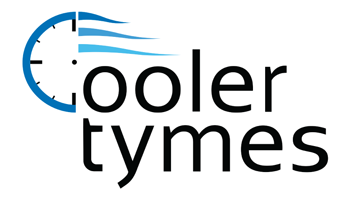
You shouldn’t need to compromise on comfort or drain your wallet to keep your house at a pleasant temperature during hot days.
But what is the ideal temp, exactly? We review ideas from energy pros so you can find the best temperature for your family.
Here’s what we advise for the most energy-efficient setting for air conditioning in Litchfield Park.
Recommended Thermostat Settings for Summer
Most families find using the thermostat at 72-73 degrees provides ideal comfort. However, if there’s a big difference between your inside and outdoor temps, your utility expenses will be greater.
This is our advice based on the U.S. Department of Energy (DOE) and ENERGY STAR®.
While at home: 78 degrees. While that appears too high, there are ways you can keep your house cool without having the AC going constantly.
Keeping windows and curtains down during the day keeps cold air where it belongs—within your home. Some window solutions, like honeycomb shades or plantation shutters, are created to give added insulation and improved energy savings.
If you have ceiling fans in your home, the DOE says you can increase thermostat temps about 4 degrees higher without compromising comfort. That’s because they refresh by a windchill effect. As they cool people, not rooms, shut them off when you exit a room.
If 78 degrees still appears too uncomfortable on the surface, try running a test for a week or so. Start by increasing your temperature to 78 degrees while you’re at your residence. Then, steadily decrease it while following the ideas above. You could be amazed at how refreshed you feel at a hotter temperature setting.
While away: 88 degrees. There’s no need to keep the air conditioner on all day while your residence is vacant. Turning the setting 7–10 degrees hotter can save you anywhere from 5–15% on your cooling bills, according to the DOE.
When you arrive home, don’t be tempted to switch your thermostat under 78 to cool your house more rapidly. This isn’t productive and usually leads to a higher air conditioner cost.
A programmable thermostat is a good approach to keep your settings under control, but you need to set programs. If you don’t set programs, you might forget to raise the set temperature when you take off.
If you need a hassle-free solution, think about getting a smart thermostat. This thermostat works with with your phone, so it knows when you’re at home and when you’re out. Then it instinctively changes temperature settings for the best savings. How much exactly? About $180 yearly on heating and cooling, according to ENERGY STAR.
Another perk of using a smart thermostat? You can use your phone to watch and adjust temperature settings from nearly anywhere.
While sleeping: Around 70 degrees. While ENERGY STAR suggests 82 degrees, that might be unpleasant for the majority of families. Most people sleep better when their bedroom is cold, so that’s why the National Sleep Foundation recommends 60–67 degrees. But that might be too chilly, based on your pajama and blanket preference.
We recommend running an equivalent test over a week, moving your thermostat higher and steadily decreasing it to find the best temperature for your residence. On mild nights, you may discover keeping windows open at night and running a ceiling fan is a preferable solution than running the air conditioning.
More Ways to Save Energy During Warm Weather
There are other methods you can conserve money on cooling bills throughout warm weather.
- Install an energy-efficient AC system. Central air conditioners only last about 12–15 years and get less efficient as they become older. An updated air conditioner can keep your residence comfier while keeping electricity costs low.
- Book yearly air conditioner service. Routine air conditioner maintenance keeps your equipment operating smoothly and might help it run at better efficiency. It might also help lengthen its life span, since it allows techs to find little troubles before they cause a major meltdown.
- Change air filters often. Read manufacturer instructions for switching your air filter. A dirty filter can cause your system to short cycle, or turn on and off too much, and drive up your electrical.
- Measure attic insulation levels. Almost 90% of homes in the U.S. don’t have adequate insulation, according to the Insulation Institute. Most southern climates need 13–14” of attic insulation, while northern climates require 16–18”.
- Have your ductwork examined. Ductwork that has separated over time can seep conditioned air into your attic, walls or crawl space. This can result in huge comfort troubles in your residence, such as hot and cold spots.
- Seal cracks, doors and windows. Keep muggy air where it should be by closing holes. You can also caulk or weather strip doors to keep more cold air inside.
Use Less Energy This Summer with Cooler Tymes LLC
If you want to save more energy during warm weather, our Cooler Tymes LLC pros can assist you. Give us a call at 623-208-6444 or contact us online for additional details about our energy-saving cooling solutions.
